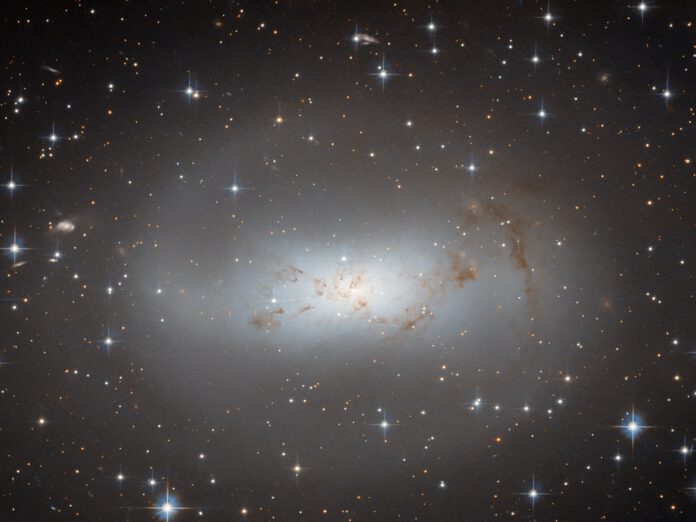
The space photo of the week presents a fascinating capture of the irregular galaxy ESO 174-1, one of the Milky Way’s nearest cosmic neighbors.
If you were to ask the average person passing by on the street to draw a picture of a galaxy, most likely they would sketch a spiral galaxy. However, the universe boasts a variety of different types of galaxies, such as barred spiral galaxies, elliptical galaxies, and irregular galaxies. ESO 174-1 falls into this last category.
Located eleven million light-years away from Earth, ESO 174-1 is composed of a large bright cloud of stars, with visible dark strands of gas and dust. The photograph shown below was taken using the Hubble Space Telescope.
The Birth of Irregular Galaxies
Irregular galaxies represent about three percent of all galaxies in the universe. But how do these irregular galaxies come into existence? There are several possibilities. It could be that two galaxies fly past each other and the smaller one loses a large amount of material and subsequently becomes distorted. Alternatively, irregular galaxies can also form when two galaxies collide and merge.
A Journey Back in Time
Did you know that the first galaxies in the universe also had an irregular shape? As these galaxies merged with others, increasingly larger spiral galaxies were formed. Thanks to powerful space telescopes like Hubble and James Webb, we can peer back in time and scrutinize starlight from billions of years ago. This has provided astronomers with knowledge of how galaxies evolve over time.











